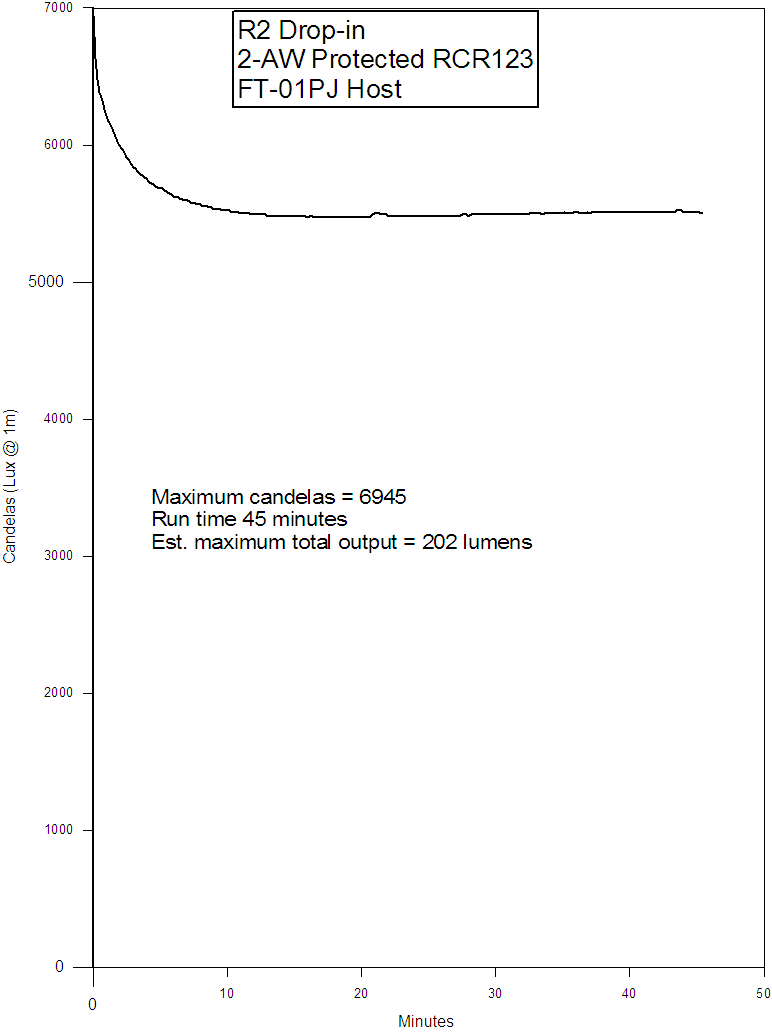Curious_character
Flashlight Enthusiast
- Joined
- Nov 10, 2006
- Messages
- 1,211
I don't have permission to post in the Flashlight Reviews section, so hope this posting is appropriate here.
Here are measured run times for the R2 dropin which has been recently sold at the Marketplace



There's obviously no real regulation when running with an 18650 cell, but the apparent drop in light level isn't that much over the very long run time. The steep drop when running with the RCR123 cells looks a lot like profiles I've seen when the LED heat sinking is inadequate, but it might be due to the regulator.
Shipping was super-fast, the beam is very nice looking, and at $20 I feel it's a good value. The reflector is pretty deep, which results in a smaller spill diameter but brighter hot spot than some other lights with the same diameter reflector.
c_c

Here are measured run times for the R2 dropin which has been recently sold at the Marketplace



There's obviously no real regulation when running with an 18650 cell, but the apparent drop in light level isn't that much over the very long run time. The steep drop when running with the RCR123 cells looks a lot like profiles I've seen when the LED heat sinking is inadequate, but it might be due to the regulator.
Shipping was super-fast, the beam is very nice looking, and at $20 I feel it's a good value. The reflector is pretty deep, which results in a smaller spill diameter but brighter hot spot than some other lights with the same diameter reflector.
c_c


